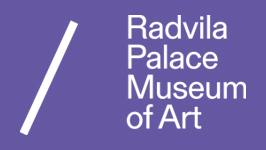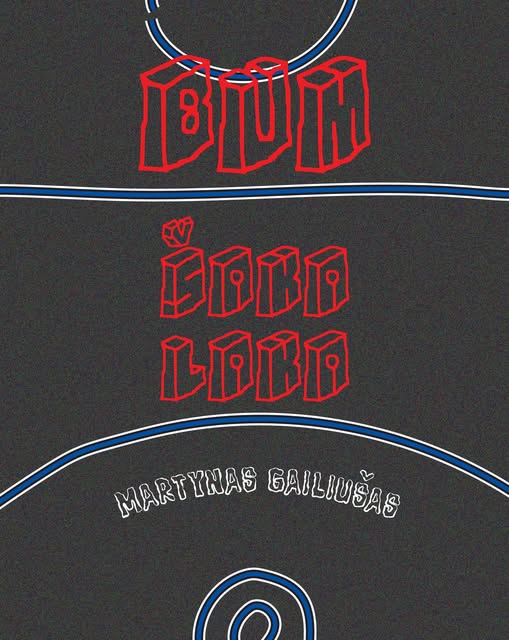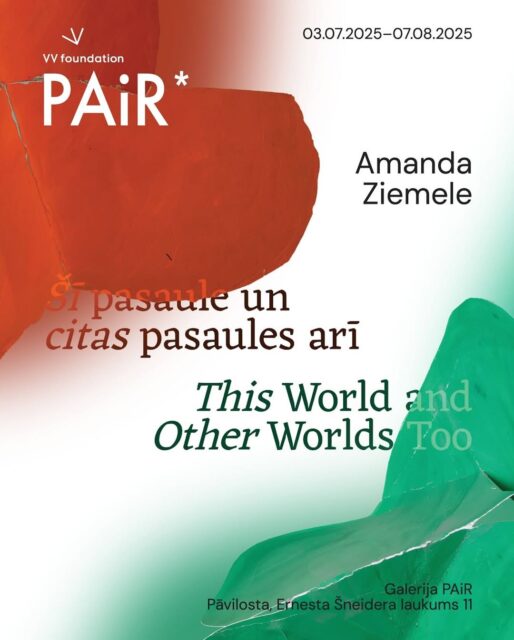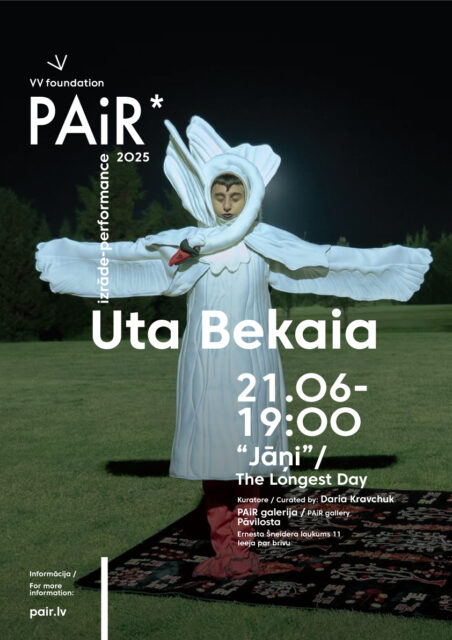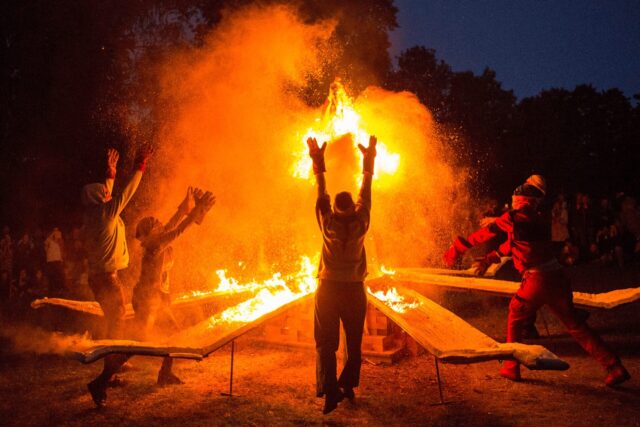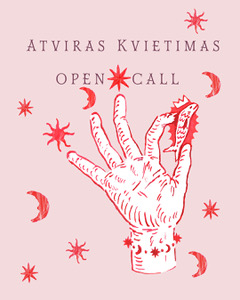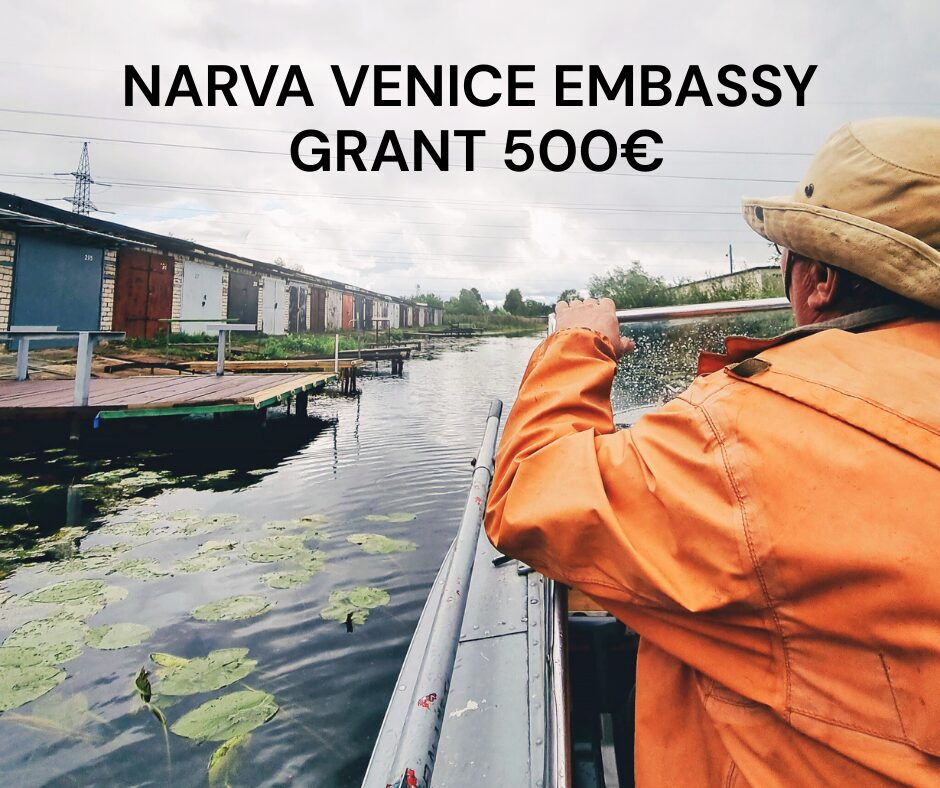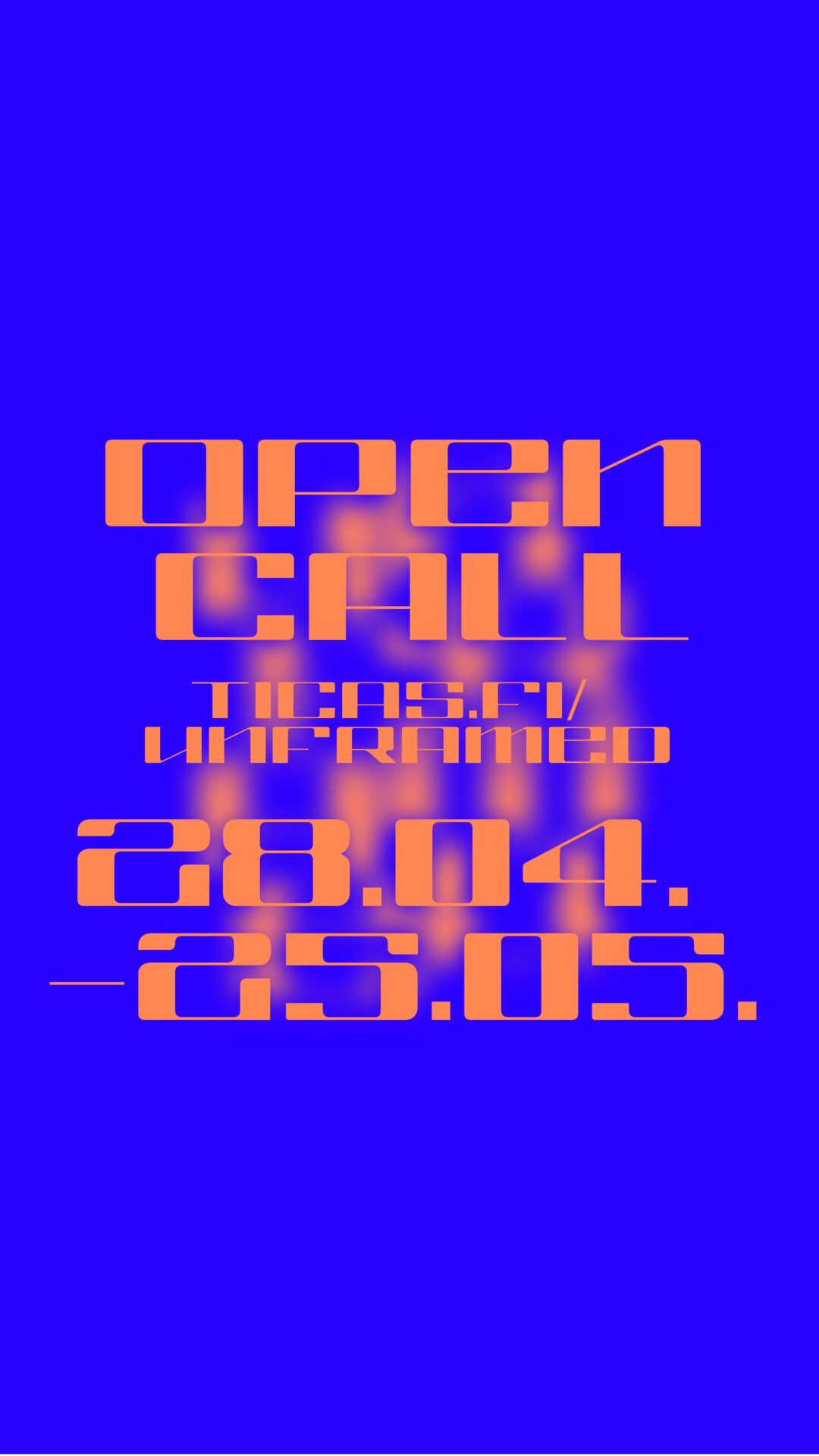Starter-KIT is an annual Estonian contemporary photography yearbook. The first edition came out on 23 November in Tallinn. A few months earlier, before the first snow arrived, I had a coffee and a talk with the founders, Elo Vahtrik and Kertu Rannula, about the image, the digital space, collectivity, archiving and pixels.
Laura De Jaeger: Let’s start from the soil of the medium … What is happening in contemporary photography and photography books these days in Estonia?
Elo Vahtrik: Kertu and I have been part of the field for around five years. Not that long, I’d say. Photobooks are released frequently, it’s a relatively popular medium. What we see are mostly photography books that relate to exhibitions. They function in a way to archive an exhibition, or to be the subtext to an exhibition. Or they are monographs, for artists to show what they have been up to. This is not a problem in itself, but it is starting to feel like a one-way street
Kertu Rannula: I feel in Estonia the photobook is definitely usually used as a byproduct.
EV: In photography, we see rather classically composed, harmonious pictures. Not too much of 2000 aesthetics, or pixel pornography. Not too much of that.
KR: And really research-based. More specifically, academic research-based. Not that experimental, I would dare to say.
EV: Rather classical?
KR: Yes, but still, of course, it deals with social and political issues.

Photo: Elo Vahtrik and Kertu Rannula
LDJ: What is starter-KIT’s approach in this field? What is the main goal of the photobook?
EV: The idea is to broadcast a wide range of young artists who are Estonia-based, or from Estonia.
KR: And to show different ways of using photography-based art as well!
EV: Not all artists are photographers, or define themselves primarily as photographers. We live in a world with an abundance of photography, which we interact with every day. Everybody deals with photography in one way or another, but it’s not always in the most deliberate or intentional way. There is an abundance of aesthetic and mundane stuff. If you still choose to work with photography in one way or another, what is it you want to say, and how do you say it?
KR: The main goal of the book is to archive this material. Today, we live in a time of social media, and consume photographs from social devices. They seem trivial and weird products. Although we consume a lot of images this way, we still have a sort of hierarchy between the photographs in prints, a book, a gallery and social media. I believe it’s important to archive this momentum. I also believe in three to four decades, social media will not function the same way as it does now. The publication aims to capture these images and the essence of social media today, and what better way than to print them? It feels it will have a longer lifespan that way. We might now think our photographs in Drive are safe, but things change so quickly. I used to store photographs on discs.
EV: Ten years is like boom-boom-boom, over.
KR: I personally enjoy the freedom of Instagram footage as well. People are relaxed about it. Some artists we selected (as well as me personally) use Instagram as a kind of creative shitposting medium. It is still practice-based, it has a direction and thought behind it, but it’s different from what you’d see in a gallery. Some of the artists were even surprised when we approached their Instagram feed for the book. I could feel the hierarchy between their material there and the ‘finalised artwork’. We kind of had to convince them how we like what they’re doing there, and that it’s worth capturing and archiving.
EV: Another reason why archiving is important in photobook form is the physicality of it. When I was studying for my BA, I found a lot of artists through the Internet able to hold a photograph, and see how it’s put in a book, how it works in a book. The physical aspects, really. I also missed understanding what was happening in the field. I could see only one person’s approach to it. I was left wondering what was happening in the field around them.
With social media today, one can get an easier overview via the abundance. The photobook could function as an art-history tool. Today, the time of ‘eras’ is over, and everything is intertwined. What is the visual experience of such a thing? It’s also important to show that.
KR: On the Internet, everything is very algorithm-based. At one point, you can get locked in the algorithm. You get shoved by the same things, over and over again, whether on Instagram or Google. Sometimes, to spice it up, I go to the library. The library doesn’t have an algorithm. There, you can see things you’d never think of. New artists that you didn’t know about, and that would never pop up.
EV: As photography is, of course, a medium that you can easily show on screens and other devices, it does start to live differently on paper. The printing technique, the type of paper, how it is placed … Every detail of this physical part is important and gives extra information.

Photo: Elo Vahtrik and Kertu Rannula
LDJ: You mention artists’ Instagram feeds, and browsing for information online. How did you select the artists for the book? And what were the important categories?
KR: Some people we knew we wanted to include from the start. About half the artists we got to know during the process. We would meet and show each other new accounts of artists that we found via Instagram. Which also shows the book to be something which brings in people from different fields. We invited Stina Isabel Gavrilinn, Magnus Harjak, Irma Holm, Enriko Kroon, Kristina Kuzmenko, Andra Rahe, Johanna Reinvald, Anna Tamm, Annabel Tanila and Laura Tursk. Half of them work with photography as their main medium, the other half don’t. Some are graphic designers, of which one works mostly with 3D programs, which is also a photography-based medium, actually. When we invited Magnus Harjak to contribute to the book, he immediately mentioned the connection between 3D and photography, and is interested in trying out print-based ways of presenting.
EV: Everything that is put in the book, whether it’s made in 3D or taken via an old smartphone, is related to, or present thanks to, camera obscura.
KR: One artist we selected is actually a performance artist. She uses photography as a visual diary. And this is what we really enjoyed. There is a freedom to it.
EV: Annabel Tanila said: ‘I don’t know why I photograph. I see something and I really just have to take a picture.’ She has a drive and a need to include photography. Which contributes to the questions of the book: Why do we take photographs? And what do we do with it?
KR: We’re really keen on her practice, because she uses photography as material. It’s not her primary medium, and she doesn’t photograph where the photograph becomes straightaway the final art product. The diary aspect interests us. You can also feel the influence of memes and social media. Her practice is fun. The meme is a rather contemporary medium. It’s also scene-based: not everyone understands certain memes.
EV: In order to understand memes, you have to understand visual references and know the background. You have to have great visual literacy to understand memes. But somehow, because it is created online, on the Internet, it feels banal. We hope to blend these two things in the book: people who work in a more classical way with photography, documenting, but also new ways of images that we are familiar with from different places. We put them together to show the world and the time we are in.
LDJ: All of them basically reflect the medium of photography in the broadest sense?
KR: Yes, they kind of break down these boundaries we still notice around us. What is considered photography, and who is considered a photographer. And also, we didn’t want to stay Tallinn-based. Our goal is to go further. We have people from Tartu and Viljandi, and one is originally from the island of Saaremaa, and now works mostly in Viljandi. This also shows something about what photography is today. In Estonia there is also still a strong distinction between the EKA photography student and the Tartu photography student.
EV: It’s a bit silly, because we are such a small country. We have two universities that teach photography, and we don’t really get together.
LDJ: Are all the artists creating new works for the book?
KR: All the artists know that the photobook is the goal, so all the work is produced specifically, and only, for the book. Some people were already gathering material before it was suitable; others had a project in mind for a while, but now with this book found the perfect opportunity to execute it. Some people had an archive of photographs, and found this might be a good time to go through it again. It can also be an interesting reaction to the digital sphere, the overproduction of images. They don’t produce anything new, but use something they already have. Each one of them has different ways of working.
LDJ: Do you also in this way have any aspirations to take up a representative role for contemporary Estonian photography?
KR: Yes, I mean, the book is such an easy medium to send abroad. It’s similar to what made 1990s video artists so successful internationally, such as Jaan Toomik and Ene-Liis Semper. Their works were sent to biennials all over the globe, because it was so easy. A book can do that as well. At the same time, the book is a very democratic medium. This is something we find important as well, to not only have this elitist feel of art. It’s part of photography in general: when photography was invented, we didn’t need to deal with realism any more. It shifted the role of the artist, because film was so cheap.
EV: Cameras as well!
KR: Yes, those as well. From the beginning of the 20th century, basically anyone could afford it. It is now the same with social media and a smartphone. Photography is a democratic mechanism. Books are similar to that.

Photo: Elo Vahtrik and Kertu Rannula
LDJ: What are your plans for distribution? Do you plan to distribute internationally, or even go back digitally to broaden the audience?
EV: For now, we are dealing with publishing the first issue, which will probably be printed by the time this interview goes online. Our current plans for distributing will start with the Baltic States and Finland. In the future, we’ll also aim for photography festivals. There are many interesting festivals, including photography books. This is a great way to show what is happening in Estonian photography, especially with young artists.
KR: Considering the last question, a photography book is also democratic to own! Buying art is only possible with a certain amount of capital, but almost anyone can afford a book.
EV: While it’s not that expensive, you get a lot of content. It’s also important to mention that the book itself will be a work of art. It’s designed as a total piece. It’s not only an archive, but an object in its own right. Artist books are up and coming in the Estonian art field: we see more and more interesting binding and design choices, but it’s never enough, is it?
LDJ: In Estonia, however, there is a generation of photographers who are very present in the field, but mainly working with installation, objects, and even painting. They seem to be walking away from the medium of photography in the classic sense. I’m curious what drives you to produce a medium-based magazine in such an increasing cross-disciplinary field?
EV: I also work a lot with installation. However, everything I do, if I think about it, is approached through photography. It’s not only a starting point; it is the way I think. Even if the object itself is physical, the way I construct it and approach it is in a way related to photography as a medium. The book itself can also be approached as a physical object, but it is also deeply photographic. In a sense, it’s the best of both worlds.

Photo: Elo Vahtrik and Kertu Rannula
LDJ: This cross-disciplinary approach makes me think about collaboration. Do you have any collaborations with partner institutions in the Estonian art field? Lugemik plays a prominent role in publishing artist books, but there’s also Tallinn Photomonth.
KR: As artists, we want to keep a certain amount of independence. This gives us the freedom to figure out ourselves and what our identity and goals will be. But there are challenges. Right now, it’s been really nice how supportive FOKU, the union of photography artists, has been. They also organise Tallinn Photomonth.
EV: We are part of their satellite programme and launch our book there.
LDJ: Apart from institutions, do you feel, as an artist-run initiative, you’re filling a gap of something which is missing in the field?
EV: I don’t think there’s a gap in artists or the quality of work. But it’s always hard to do things just by yourself. By creating this platform, it helps to show what’s happening in Estonian photography, and puts young artists and photography more in the spotlight. So briefly showcasing and archiving. But it also ties artists together, as they are part of the same project. I personally think it’s easier to do things collectively, and also more rewarding. You’re always stronger as a collective.
LDJ: I also ask because both of you are involved in ENKKL, the young contemporary art union, which claims a place for the younger generation of artists.
EV: Yes, I mean, what is missing in terms of photography is collaborative photobooks. The emphasis on books, not to be mistaken for photo journals. Starter-KIT’s whole essence is based on collaborative practices, and the photobook as an independent medium. The whole book is an artwork, but the whole book works only because it has ten artists. Each of them puts in a project. They give their utmost, but it’s always ten per cent maximum.
KR: There is us coordinating it, there’s an artist, an essayist, designers … It’s funny how the book itself is a strict medium, but at the same time, inside, it’s really ultra-interdisciplinary. So many people are on board. Our visual identity, for example, as well as the book, is designed by Kertu Klementi and Emma Reim, who work together as a duo. They both mix mediums in their practice, and have a soft yet powerful approach. Their experimental way of working suits starter-KIT and our ideas behind it very well. The name of the book is starter-KIT, but everywhere you can find us as the starter-KIT collective. When we were both studying at the academy, the togetherness was there in the background. You don’t notice it, take it for granted, and suddenly it’s gone.
KR: After that, when you graduate, you’re often alone. Maybe someone decides to write about your work, or you ask explicitly, but in general it’s hard to get feedback. What we did here with the book, coming together with the artists, discussing, sharing ideas, recreates that structure of collectivity.
LDJ: What photobooks do you as artists look at? What kind of books inspired you for this?
KR: For me, the starting point was actually during my exchange studies in Iceland. The name constantly popping up was Dieter Roth. He was the father of the artist book, and really challenged how we consume books. What is a book, what does it represent, what could it be? He used food and other materials in a very experimental way. He was originally from Switzerland, but he married an Icelandic woman and lived in Reykjavik. He was very prominent there. You could have turned it into a drinking game: every time the teacher mentioned his name, you could drink (laughs). That same year, later, I was doing a residency in Riga. There I saw the 2020 edition of Latvian Photography, and how Latvians work with photobooks. Since then, I’ve been a fan. I’m already waiting for the next edition. Since then, everywhere I travel, I take a photobook as a souvenir. Elo has the same thing, and then we meet up and look through our finds. It’s a small ritual, where I look for indie publishers or museums, and spend hours browsing in bookshops. I really have a photobook fetish.
EV: There’s so many different approaches photo books can take. Work-based, no additional text … My first good memories are related to Latvian Photography, especially the 2020 and 2019 issues. I like to go through this one for example, Suave, from Mexico. It’s more of a photo journal. What I like here is that there’s an abundance of content. For me, this issue kind of gives a feeling of what it is to live in this era. It has different types of collage, ways of combining text and photographs. It also opens my eyes in a way that photo books can be fun. They should be fun. To break this elitist way of doing photography again.

Photo: Elo Vahtrik and Kertu Rannula
LDJ: You will showcase the Estonian photography scene, but there is also a sub-theme to each starter-KIT edition?
KR: We were thinking of a theme that connects all artists together but is poetic enough for everyone to have their own way of interpreting it. It should also be a reflection of our times. A broad sub-theme seemed kind of needed. The first theme is ‘avoid the void’, which refers to the political and social climate, but in a way is a subjective reflection about the current state of photography. At the same time, it incorporates the consumption of images in social media and the post-digital time we’re in. So the theme can be approached from different angles.
LDJ: Finally, you have a plan to run for about ten years!
KR: Yes! Most people find it a rather ambitious plan, since we don’t even have the funding ready for the first (laughs). But I think we both had a vision of a block of those ten books, laid out on top of each other.
It just struck us, you know: ten years, a hundred artists. Ten years of Estonian photography captured! People also mention that it’s a long time for us, being so young, just starting. I feel like, maybe at one point, Elo and I will move on from curating it, and we can hand it over to someone else. I don’t think it’s a bad thing. I think it’s also, you know, to keep it fresh and relevant. So I don’t mind handing it over to someone at one point. And life is probably going to change a lot, and that’s needed as well.
EV: We’re going to do it for as long as we want, as long as there’s a passion for it. It is a passion project for sure. Right now, we feel it’s important. I think, if we manage to publish for five years straight, that would be great as well. Ah, even if we get more than one done, we are good to go (laughs). So let’s start with the first one, then the second … Everything is already better than we ever dreamed of.




